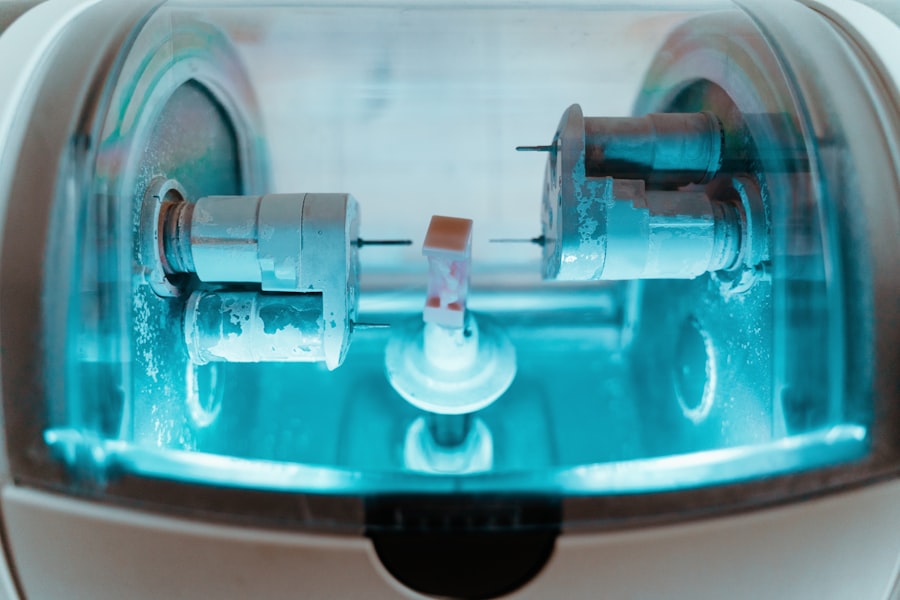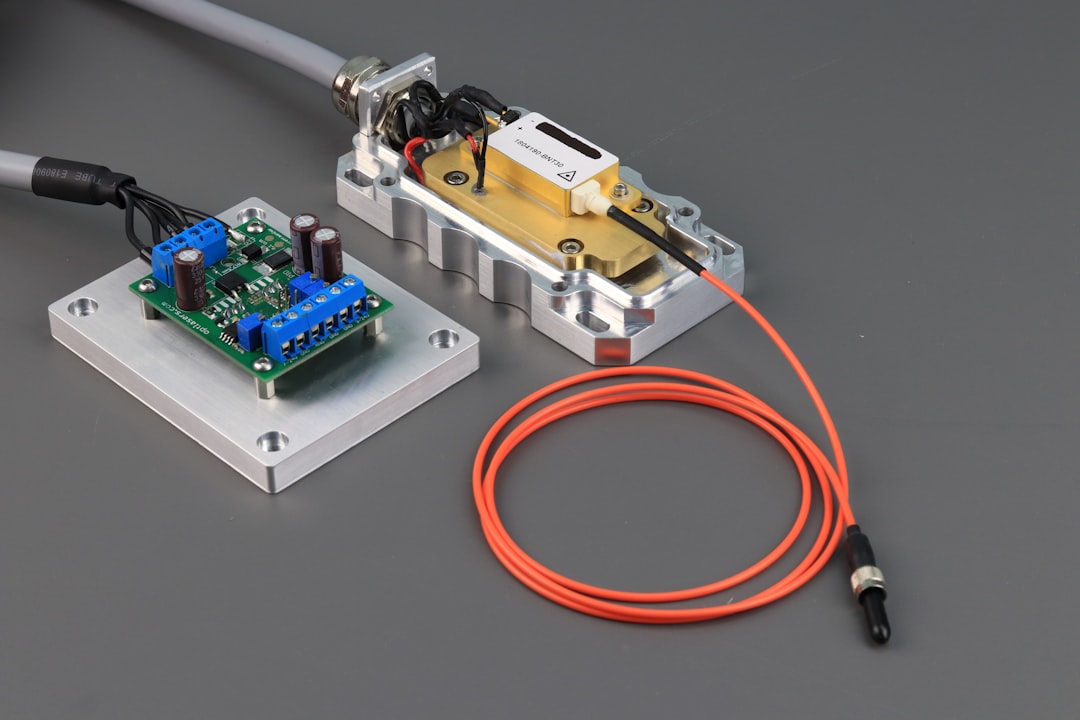Facial laser hair removal is a popular cosmetic procedure that utilizes concentrated beams of light to target and eliminate unwanted hair. This method is favored for its precision and effectiveness, allowing you to achieve smooth skin without the hassle of traditional hair removal techniques like shaving or waxing. The laser works by emitting a specific wavelength of light that is absorbed by the pigment in the hair follicles, effectively damaging them and inhibiting future hair growth.
As you consider this option, it’s essential to understand how the process works and what to expect during your treatment. The procedure typically begins with a consultation where a trained professional assesses your skin type, hair color, and overall suitability for laser treatment. This initial evaluation is crucial, as it helps determine the best approach for your individual needs.
During the actual treatment, you may experience a sensation similar to a rubber band snapping against your skin, but most people find it tolerable. The duration of each session can vary depending on the area being treated, but facial treatments are generally quick, often taking only a few minutes to complete. Understanding these aspects can help you feel more prepared and confident as you embark on your journey toward smoother skin.
Key Takeaways
- Facial laser hair removal targets hair follicles to reduce hair growth
- Factors affecting timing include hair color, skin color, and hormonal changes
- Recommended time interval between sessions is typically 4-6 weeks
- Risks of not waiting long enough include skin irritation and potential damage
- Schedule next session based on hair regrowth and professional advice
Factors Affecting the Timing of Facial Laser Hair Removal
When it comes to scheduling your facial laser hair removal sessions, several factors come into play that can influence the timing of your treatments. One of the most significant factors is the hair growth cycle. Hair grows in three distinct phases: anagen (growth), catagen (transitional), and telogen (resting).
Laser hair removal is most effective during the anagen phase when the hair is actively growing and is more susceptible to the laser’s effects. Therefore, timing your sessions to coincide with this phase is crucial for optimal results. Another important consideration is your skin type and color.
Different skin tones respond differently to laser treatments, and some lasers are more effective on specific skin types. For instance, individuals with lighter skin and darker hair tend to see better results because the contrast allows the laser to target the hair follicles more effectively. Additionally, factors such as hormonal changes, medications, and even seasonal variations can affect hair growth patterns, making it essential to take these into account when planning your sessions.
Recommended Time Interval Between Facial Laser Hair Removal Sessions

The recommended time interval between facial laser hair removal sessions typically ranges from four to six weeks. This timeframe allows for optimal results by ensuring that you are targeting hair follicles during their active growth phase. However, this interval can vary based on individual factors such as hair growth rate, skin type, and the specific laser technology being used.
For example, some individuals may require shorter intervals if their hair grows quickly, while others may benefit from longer intervals. It’s also important to note that multiple sessions are usually necessary to achieve the desired level of hair reduction. Most people require anywhere from three to seven sessions for optimal results, depending on their unique circumstances.
Sticking to the recommended intervals not only maximizes the effectiveness of each session but also minimizes the risk of potential side effects that can arise from inadequate timing between treatments.
Potential Risks of Not Waiting Long Enough Between Sessions
| Risk | Description |
|---|---|
| Overtraining | Increased risk of overtraining syndrome, leading to decreased performance and increased risk of injury. |
| Decreased Recovery | Insufficient time between sessions can lead to decreased recovery, impacting muscle growth and adaptation. |
| Increased Injury Risk | Not allowing enough time for the body to recover can increase the risk of overuse injuries. |
| Decreased Motivation | Constant training without adequate rest can lead to decreased motivation and burnout. |
Rushing into your next facial laser hair removal session without allowing adequate time between treatments can lead to several potential risks.
When treatments are performed too close together, your skin may not have enough time to recover from the previous session, leading to increased redness, swelling, or discomfort.
This irritation can be particularly pronounced on sensitive facial skin, which may react more strongly than other areas of the body. Additionally, not waiting long enough between sessions can compromise the effectiveness of the treatment itself.
In some cases, premature treatments can even result in uneven hair regrowth or patchy results, which can be disheartening after investing time and money into the process.
How to Determine When to Schedule Your Next Facial Laser Hair Removal Session
Determining when to schedule your next facial laser hair removal session involves paying attention to your body and understanding your individual hair growth patterns. After your initial treatment, you may notice that some hairs fall out while others continue to grow. It’s essential to monitor this process closely; ideally, you should wait until most of the treated hairs have shed before scheduling your next appointment.
This typically occurs around four to six weeks after your last session. Consulting with your laser technician or dermatologist can also provide valuable insights into when to schedule your next session. They can assess your progress and help you determine if you’re ready for another treatment based on how well your skin has healed and how much hair has regrown.
Keeping an open line of communication with your provider ensures that you receive personalized recommendations tailored to your specific needs.
Tips for Maintaining Results Between Facial Laser Hair Removal Sessions
Maintaining results between facial laser hair removal sessions is crucial for achieving long-lasting smoothness and minimizing regrowth. One effective strategy is to avoid sun exposure on treated areas as much as possible. UV rays can irritate sensitive skin and may lead to pigmentation changes or other complications.
If you must be outdoors, applying a broad-spectrum sunscreen with a high SPF can help protect your skin. Another tip is to avoid other hair removal methods during this period. While it may be tempting to shave or wax stray hairs, these methods can disrupt the hair growth cycle and interfere with the effectiveness of your laser treatments.
Instead, consider using gentle exfoliation techniques or soothing creams recommended by your provider to keep your skin healthy and free from irritation while waiting for your next session.
Consultation with a Professional for Personalized Advice
Before embarking on your facial laser hair removal journey, consulting with a qualified professional is essential for receiving personalized advice tailored to your unique needs. A licensed practitioner will assess various factors such as your skin type, hair color, and medical history to determine if you are a suitable candidate for laser treatment. They will also explain the different types of lasers available and help you choose the one that best suits your individual requirements.
During this consultation, don’t hesitate to ask questions about what to expect during and after the procedure, including how many sessions you might need and what kind of results you can realistically achieve. A knowledgeable professional will provide you with comprehensive information that empowers you to make informed decisions about your treatment plan.
Benefits of Following Recommended Time Intervals for Facial Laser Hair Removal
Following recommended time intervals for facial laser hair removal offers numerous benefits that contribute to achieving optimal results while minimizing risks. By allowing adequate time between sessions, you ensure that each treatment targets hair follicles during their most effective growth phase, maximizing hair reduction and enhancing overall outcomes. Additionally, adhering to these intervals helps protect your skin from irritation and other potential complications associated with premature treatments.
Ultimately, investing in facial laser hair removal can lead to long-lasting smoothness and confidence in your appearance. By understanding the importance of timing and working closely with a qualified professional, you can navigate this process effectively and enjoy all the benefits that come with beautifully smooth skin. Embracing this journey with patience and care will undoubtedly yield satisfying results that enhance your natural beauty for years to come.
If you are considering laser hair removal on your face, it is important to know how long you should wait between sessions to achieve the best results. According to a recent article on InLaserHairRemoval.com, it is recommended to wait 4-6 weeks between laser hair removal sessions on the face. This allows enough time for the hair to grow back and be targeted by the laser during the next session, leading to smoother and longer-lasting results. For more information on laser hair removal treatments, you can visit InLaserHairRemoval.com.
FAQs
What is laser hair removal on the face?
Laser hair removal on the face is a cosmetic procedure that uses concentrated beams of light to remove unwanted facial hair.
How long should you wait between laser hair removal sessions on the face?
The typical recommendation is to wait 4-6 weeks between laser hair removal sessions on the face to allow the hair to enter the growth phase for effective treatment.
Why is it important to wait between laser hair removal sessions on the face?
Waiting between sessions allows the hair to grow back in the targeted area, making it easier for the laser to effectively target and remove the hair follicles.
Can waiting too long between laser hair removal sessions on the face affect the results?
Waiting too long between sessions can potentially prolong the overall treatment time and may affect the effectiveness of the laser hair removal treatment.
Are there any factors that may affect the recommended wait time between laser hair removal sessions on the face?
Individual factors such as hair growth rate, skin type, and the specific area being treated may influence the recommended wait time between laser hair removal sessions on the face. It is important to consult with a qualified professional for personalized advice.







